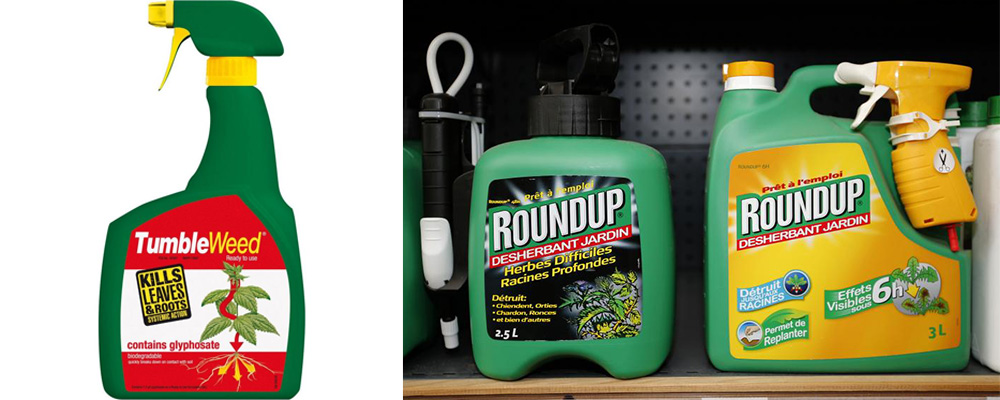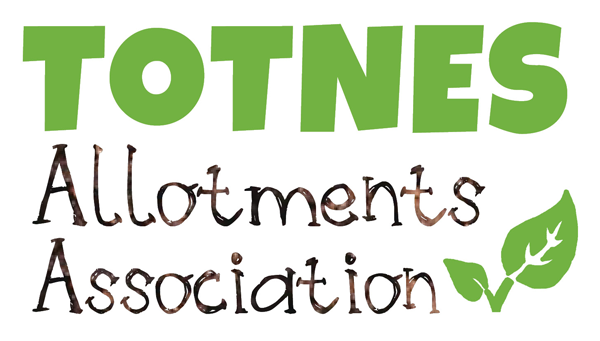The world’s most widely sold weedkiller, Glyphosate herbicide is the active ingredient in brand names such as ‘Roundup’ and ‘Tumbleweed’. It should however be used sparingly, with other weed control options taking priority whenever possible.
Glyphosate can be invaluable if used carefully (for example on neglected land), however there are 2 predominant risks:
- Damage to surrounding crops – Careless use can damage neighbour’s crops more easily than you may think.
- High toxicity – Glyphosate is far more toxic and persistent than the manufacturers have lead us to believe.
Alternatives to Glyphosate
We would recommend that you always use other methods of weed control if you can. Here are a few options that you could try:
- Manual weeding – pull or dig in wet weather, hoe in dry weather.
- Ground Cover – Cover the ground with plastic, weed membrane, card, paper, carpet, mulch.
- Green Manure – Use green manures.
- Vinegar – Try spraying with vinegar
- Water / Flame – Boiling water or a flame gun.
- Keep it dry – Water only the plants you want; dry soil surface discourages weeds.
- Snip, snip – In a hurry? Just cut the tops off.

Guidance for glyphosate
Some plants like roses, raspberries and all seedlings are very sensitive to glyphosate. Amounts which can drift in through the air (equivalent to 1/1000 of typical application rates) will damage these crops and damage may not be apparent until the following season.
Application
Glyphosate formulations are toxic to fish, water creatures and amphibians.
- Avoid spraying if there is ANY wind.
- Remember spray drifts, even on calm days, and you can’t see it. Drift can travel 20-40 metres. If you must treat up to the border of a neighbour’s land, cover their soil first.
- Use a watering can rather than a sprayer.
- Only use when daytimes are warm, and no rain forecast.
- Spot weeding with glyphosate is preferable to spraying.
- buy a ready made ‘stick’
- make a small mixture with wallpaper paste
- spray down a tube eg. toilet roll tube or cut-off bottle
How does glyphosate work?
It doesn’t destroy plants directly. Instead it opens the door to disease-causing organisms in the soil, and at the same time wipes out plant defences against those diseases. The mechanisms are well-documented, but rarely cited.
- Glyphosate chelates minerals, ie. binds them, depriving plants of minerals. It was originally patented for this property in 1964, and not as a weedkiller.
- Glyphosate kills soil organisms; this weakens plants.
- Glyphosate can interfere with photosynthesis
- Glyphosate can reduce water efficiency
- Glyphosate can shorten plant root systems
- Glyphosate may promote insects, because they seek out sick plants.
- Glyphosate persists in soil, plant, animal and manure
Courts in the US and Europe found Monsanto guilty of false advertising. In fact, Monsanto’s own test data reveals that only 2% of glyphosate breaks down after 28 days. Its half-life may be up to 22 years.
It can be released from dying weeds.
Glyphosate can also accumulate for years inside repeat-sprayed perennials. It has been found to persist in foods, manure, and animal tissue.
Risks to humans
Anyone involved with regular spraying/commercial use should get guidance.
In most humans the main risk is from eating treated corn or soya. We have as yet little information about the long term effects of genetically engineered crops, which are designed for use with, and resistance to, glyphosate.
Evidence is increasing about the following risks of glyphosate:
- Endocrine disruption/DNA damage/Developmental toxicity/Neurotoxicity/Reproductive toxicity/Cancer
Clearly the occasional use of glyphosate on our own plots is not as severe as the rocketing quantities used by US farmers. But this information is still important. It’s not on the packet, is it?
